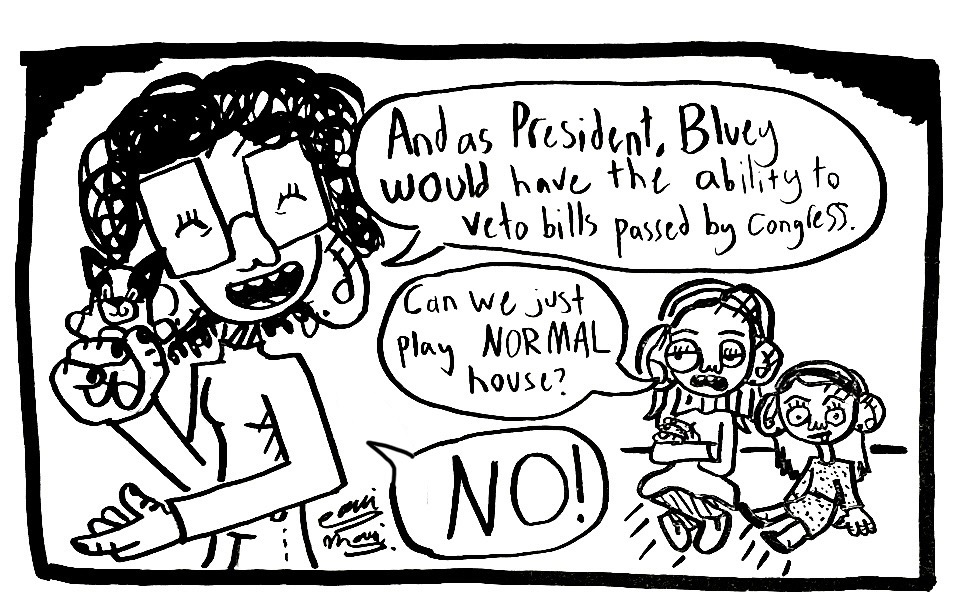Millennials are trying to sanitize higher education, at least according to critics of trigger warnings.
The debate has quickly been gaining steam over the last year and has moved closer and closer to home. This month, American University’s faculty senate passed a resolution stating their opposition to trigger warnings or “labeling controversial material” because they believe it allows students to avoid participating in class.
At GW, the debate hasn’t quite reached its tipping point. So far, neither University officials nor the Faculty Senate have released any type of official statement, policy or resolution on the issue. Charles Garris, chair of the Faculty Senate’s executive committee, said that to his knowledge, no one has suggested that faculty use trigger warnings.
“I don’t believe it will come up in a serious policy discussion,” Garris said. “Why would we spin our wheels over a non-issue?”
For now, Garris may be right that trigger warnings are a non-issue, but it may not stay that way for long. Students at GW have been discussing trigger warnings for a while. One GW professor even described his personal experience with student concerns over sensitivity and trigger warnings in an article published this month in The Chronicle of Higher Education. We often see trigger warnings in our daily lives, too, when students attach them to their posts on Facebook and other social media.
Conversations about trigger warnings aren’t going away, and the University will likely be forced to join the discussion at some point. More intense student lobbying for trigger warnings is probably on its way, and when the time comes, GW shouldn’t give in to the pressure. The University should leave the use of trigger warnings up to the discretion of individual professors and avoid putting any type of mandate in place.
In our eyes, a trigger warning is simply a heads-up. It’s a method of proactively giving students the opportunity to prepare themselves before experiencing material that may trigger them or cause them to relive a past traumatic event. The concept is important and well-meaning, with the intention of protecting those students who have survived trauma. Those students deserve the accommodations necessary for them to learn, and we absolutely recognize that the mental health of our fellow students is extremely important.
But unfortunately, the national conversation about what trigger warnings are has been skewed to include censorship. Critics often cite instances in which controversial speakers were kept away from campus, when professors were fired for controversial tweets and when books were removed from syllabi. This distracts from the real purpose of trigger warnings.
A trigger warning should absolutely not involve removing material from a syllabus, and it’s unfortunate that some student activists have pushed the issue to include censorship. No professor should feel obligated to remove content like a graphic video or shocking book if that content is necessary for the intellectual growth of the class.
We fear that mandated trigger warnings might result in a chilling effect, causing professors to leave out material with which students who are able should be grappling. As many critics have already said, being uncomfortable is an important part of learning, and being uncomfortable is not the same as being emotionally or physically triggered, which is often the result of a diagnosed mental illness like post-traumatic stress disorder.
Professors shouldn’t be forced to use trigger warnings, but they should take on some responsibility for the safety and wellbeing of their students. It’s important for our professors to remember that every student enters a class with varied experiences, and some students may even experience trauma during the course of an academic semester. Some students may need a heads-up about disturbing material – like graphic violence or portrayals of sexual violence – in order to learn.
Some classes – like those about war, history or women’s rights – are obviously more likely to contain violent or upsetting material. But in classes that focus on more innocuous subject matter yet still contain potentially triggering material, professors should consider having a discussion about that material on the first day of class. Not only will this help to prepare all students, but it will give those who may be triggered time to talk to the professor or switch out.
That means students need responsibility, too. We’re adults and we each have our own individual agency – an aspect of the trigger warnings discussion that we feel has been missing thus far.
If a student knows they are triggered by certain material and feels comfortable talking to the professor about it, that’s the best course of action. That way, professors can accommodate students individually. Of course, those conversations aren’t always possible in cases of sexual assault or trauma, especially if a student has never disclosed that information before. But professors are almost always eager to help students when they’re asked.
Other than speaking with professors, students have some responsibility to take care of themselves while putting together their schedules. Often, it’s possible to figure out whether there will be disturbing and potentially triggering material in a class just by reading the description.
And students can take advantage of mental health services on campus, too. University spokeswoman Candace Smith said while GW doesn’t have a policy on trigger warnings, students who “ever feel uncomfortable with class materials” can file a CARE report or visit Mental Health Services.
GW shouldn’t mandate trigger warnings because professors deserve to have control over their own classrooms. But professors and students can both play a part in making sure class feels safe, and making sure students are challenging each other to learn.
The editorial board is composed of Hatchet staff members and operates separately from the newsroom. This week’s piece was written by opinions editor Sarah Blugis and contributing opinions editor Melissa Holzberg, based on discussions with managing director Rachel Smilan-Goldstein, senior design assistant Samantha LaFrance, copy editor Brandon Lee and assistant sports editor Mark Eisenhauer.
Want to respond to this piece? Submit a letter to the editor.




